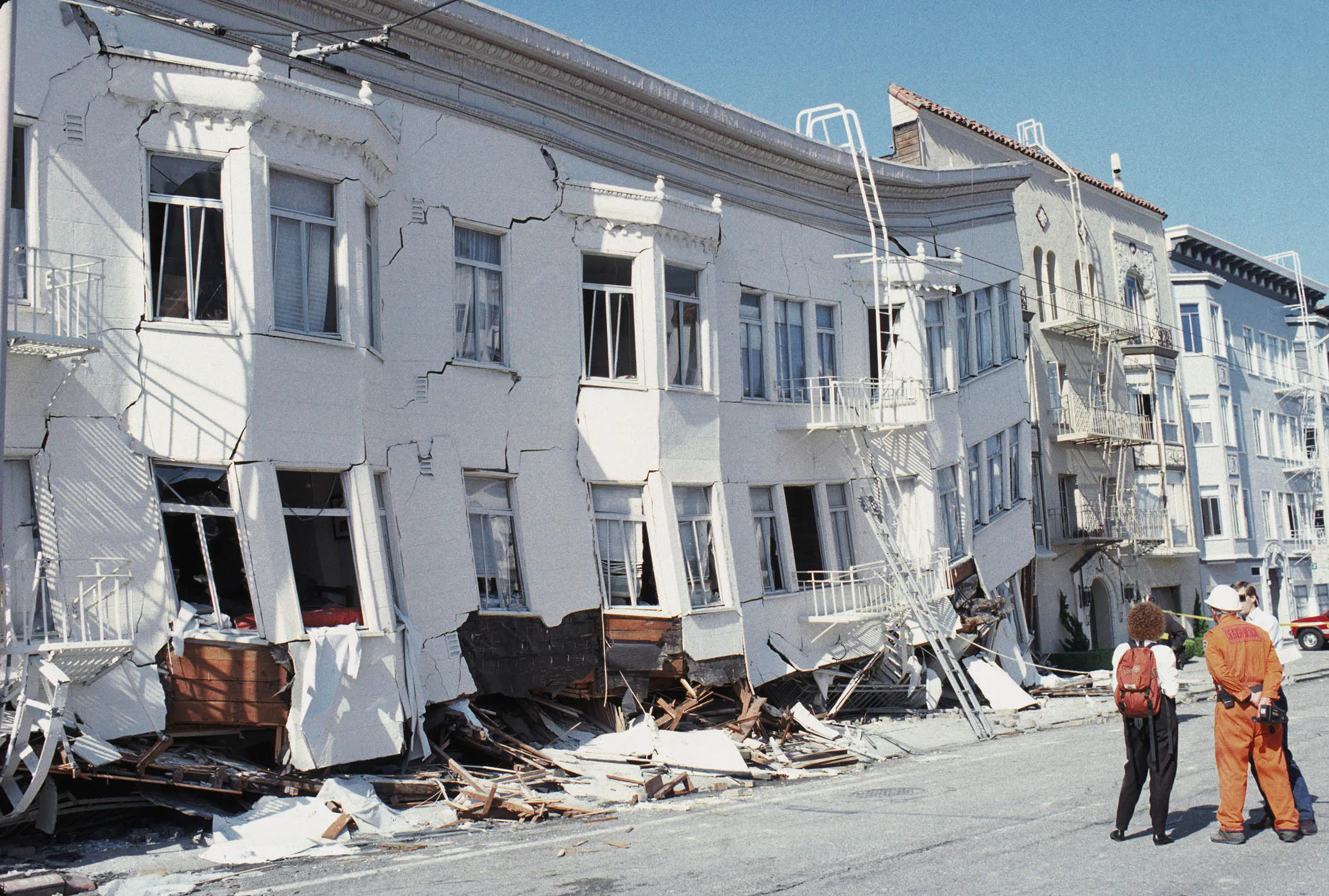
San Francisco, located in California, is no stranger to earthquakes. Situated near major fault lines, including the notorious San Andreas Fault, the city faces a constant threat from seismic activity. Over the years, earthquakes in San Francisco have shaped its history, infrastructure, and emergency preparedness systems. In this article, we’ll explore the history of earthquakes in San Francisco, the science behind them, how the city prepares for seismic events, and what residents and visitors can do to stay safe.
The Science Behind Earthquakes in San Francisco
San Francisco sits on the Pacific Ring of Fire, an area with significant tectonic activity, including many active fault lines. The most famous of these is the San Andreas Fault, which stretches from Northern California to Southern California. The San Andreas Fault is known for producing large and destructive earthquakes, though it’s not the only fault line contributing to seismic activity in the region.
Earthquakes occur when tectonic plates huge sections of the Earth’s crust move and grind against each other. These plates can either collide, slide past one another, or move apart. When the pressure between the plates builds up and is eventually released, it results in an earthquake. This sudden release of energy can cause massive shaking, which can lead to widespread damage, particularly in urban areas like San Francisco.
Historical Earthquakes in San Francisco
San Francisco’s history with earthquakes is both tragic and transformative. Some of the most devastating earthquakes in California’s history have occurred in the city, shaping its growth, resilience, and safety measures.
The 1906 Earthquake

The most famous earthquake in San Francisco’s history is the 1906 earthquake, which struck on April 18 of that year. With a magnitude of 7.9, the earthquake caused massive destruction throughout the city. The shaking lasted for just under a minute, but the aftermath was catastrophic. Fires broke out across San Francisco due to broken gas lines, and much of the city was destroyed.
Approximately 3,000 people lost their lives, and over 80% of the city’s structures were either destroyed or severely damaged. The 1906 earthquake changed how California and the rest of the world approached earthquake preparedness.
The event also led to major advancements in the study of seismology and prompted the creation of more robust building codes and safety measures in the city. San Francisco’s recovery from this disaster was long and difficult, but it also laid the groundwork for the city’s resilience in the face of future earthquakes.
The 1989 Loma Prieta Earthquake
More recently, the 1989 Loma Prieta earthquake struck the Bay Area on October 17, with a magnitude of 6.9. This earthquake caused significant damage, especially in San Francisco’s neighboring cities, including Oakland. The Loma Prieta earthquake also triggered the collapse of the Oakland Bay Bridge and caused widespread damage to buildings and infrastructure.
While the earthquake was not as destructive in San Francisco as the 1906 event, it highlighted the vulnerabilities of the region’s infrastructure, prompting further investment in retrofitting buildings and bridges to withstand seismic events. Fortunately, fewer lives were lost compared to the 1906 earthquake, but the Loma Prieta event served as a stark reminder of the ongoing earthquake risk in the area.
Earthquake Preparedness in San Francisco

Given the city’s vulnerability to earthquakes, San Francisco has invested heavily in earthquake preparedness and resilience. Local government, emergency services, and residents all play a role in ensuring that the city can respond effectively to seismic events.
Building Codes and Retrofits
San Francisco has some of the most stringent building codes in the United States, which are specifically designed to protect structures from earthquake damage. These codes are regularly updated to reflect advances in seismology and construction technology. For example, buildings are required to have flexible foundations and reinforced steel frames to absorb the energy from an earthquake without collapsing.
Older buildings, particularly those built before modern seismic codes were enacted, may be more vulnerable to damage during an earthquake. As a result, San Francisco has implemented programs to retrofit older buildings, strengthening them to withstand seismic events. This is especially important for soft-story buildings, which are often more susceptible to collapse.
Emergency Response Plans
In the event of a major earthquake, San Francisco has detailed emergency response plans in place. These plans include evacuation routes, shelters, and provisions for medical care and disaster relief. The San Francisco Department of Emergency Management (SFDEM) works closely with local, state, and federal agencies to coordinate emergency responses during seismic events.
Additionally, San Francisco regularly conducts earthquake drills to ensure that residents and first responders are prepared for a potential disaster. These drills simulate various scenarios, helping everyone from schoolchildren to city officials understand what to do during and after an earthquake.
Early Warning Systems
The city has also implemented earthquake early warning systems, which can detect seismic activity before the shaking reaches the surface. The ShakeAlert system, developed by the United States Geological Survey (USGS), provides notifications of impending earthquakes in real-time, allowing people to take immediate actions, such as dropping, covering, and holding on.
How to Stay Safe During an Earthquake in San Francisco

For residents and visitors, understanding earthquake safety is crucial. Here are some essential tips to help you stay safe during an earthquake:
- Drop, Cover, and Hold On: When the shaking begins, get down on your hands and knees, protect your head and neck, and take shelter under a sturdy piece of furniture, like a table or desk.
- Stay Indoors: If you are inside, stay there until the shaking stops. Do not run outside, as falling debris can cause injury.
- Avoid Doorways: Contrary to popular belief, doorways are not the safest place during an earthquake. Instead, take cover under furniture or against an interior wall away from windows.
- Prepare an Emergency Kit: Keep a kit with essential items, such as water, food, a flashlight, first aid supplies, and extra batteries.
- Secure Heavy Items: Ensure that bookshelves, televisions, and other heavy items are securely anchored to the wall to prevent them from falling during shaking.
Frequently Asked Questions (FAQs)
How often do earthquakes occur in San Francisco?
Earthquakes in San Francisco are relatively common due to the city’s location near the San Andreas Fault. However, large, destructive earthquakes occur less frequently, with significant events typically happening once every few decades.
Can San Francisco predict earthquakes?
While scientists can measure seismic activity and provide warnings for large earthquakes through early warning systems like ShakeAlert, earthquakes themselves are not predictable with absolute certainty.
What is the risk of a major earthquake in San Francisco?
San Francisco faces a moderate to high risk of a major earthquake, particularly along the San Andreas Fault. Experts estimate that there is a significant chance of a major earthquake occurring in the coming decades.
What should I include in an earthquake emergency kit?
A basic emergency kit should include water, non-perishable food, first aid supplies, a flashlight, batteries, a portable charger, and any necessary medications. It’s also wise to have extra clothing, blankets, and important documents in your kit.
Is San Francisco safe to live in considering the earthquake risk?
Despite the earthquake risks, San Francisco is safe to live in due to the city’s strict building codes, preparedness measures, and ongoing efforts to strengthen infrastructure. Residents who are well-prepared and take proper precautions can minimize the dangers of earthquakes.
Conclusion
San Francisco’s location near major fault lines means that earthquakes are a constant threat. The city’s rich history of seismic events, including the devastating 1906 earthquake, has shaped its approach to preparedness and safety. While no one can predict when the next major earthquake will strike, the city’s strong infrastructure, building codes, and emergency response systems make it better equipped than ever to handle seismic activity.
For residents and visitors, understanding earthquake safety and preparing for potential disasters can make all the difference. By staying informed and taking proactive steps, you can help ensure your safety in the event of an earthquake in San Francisco.








